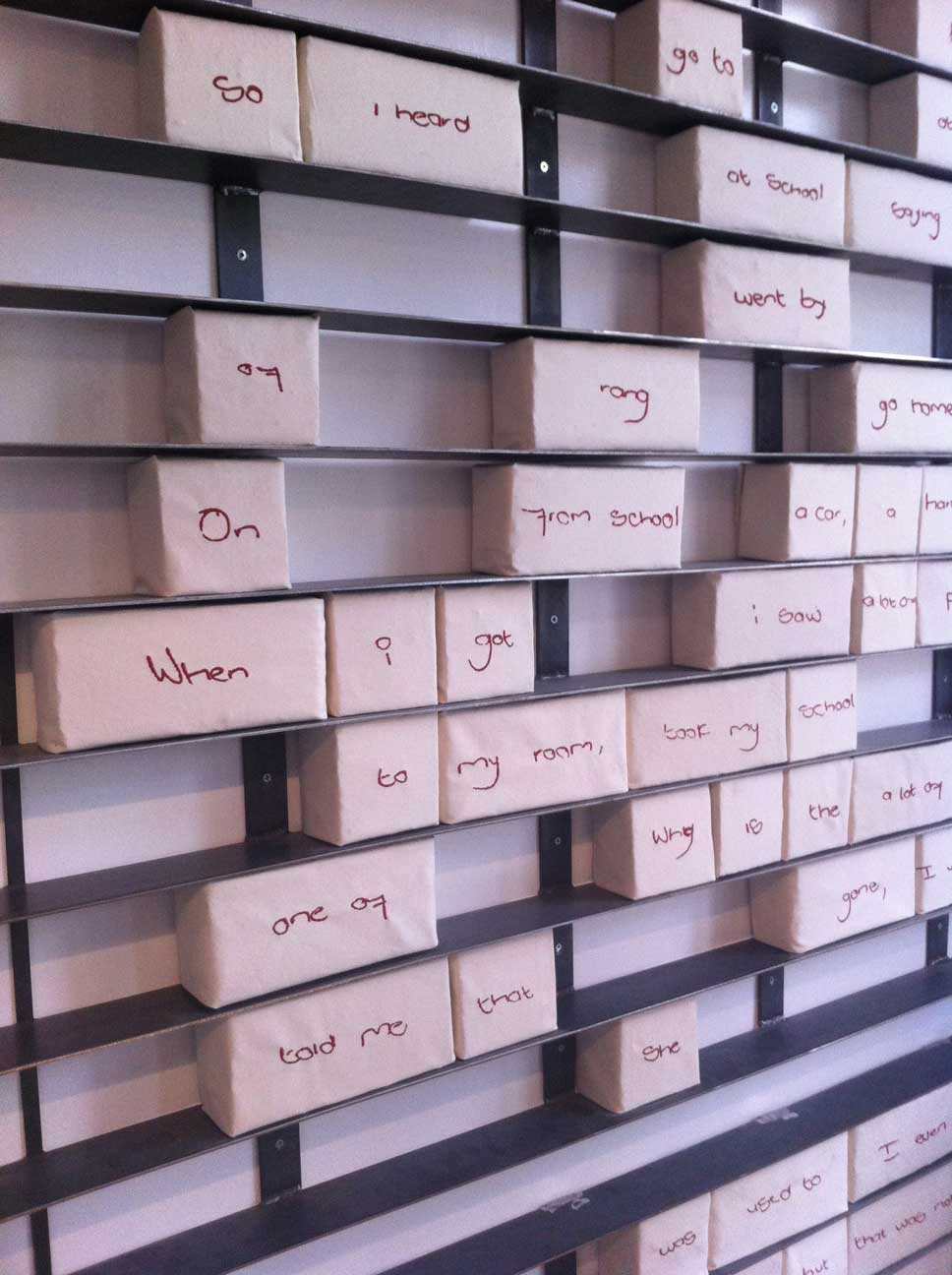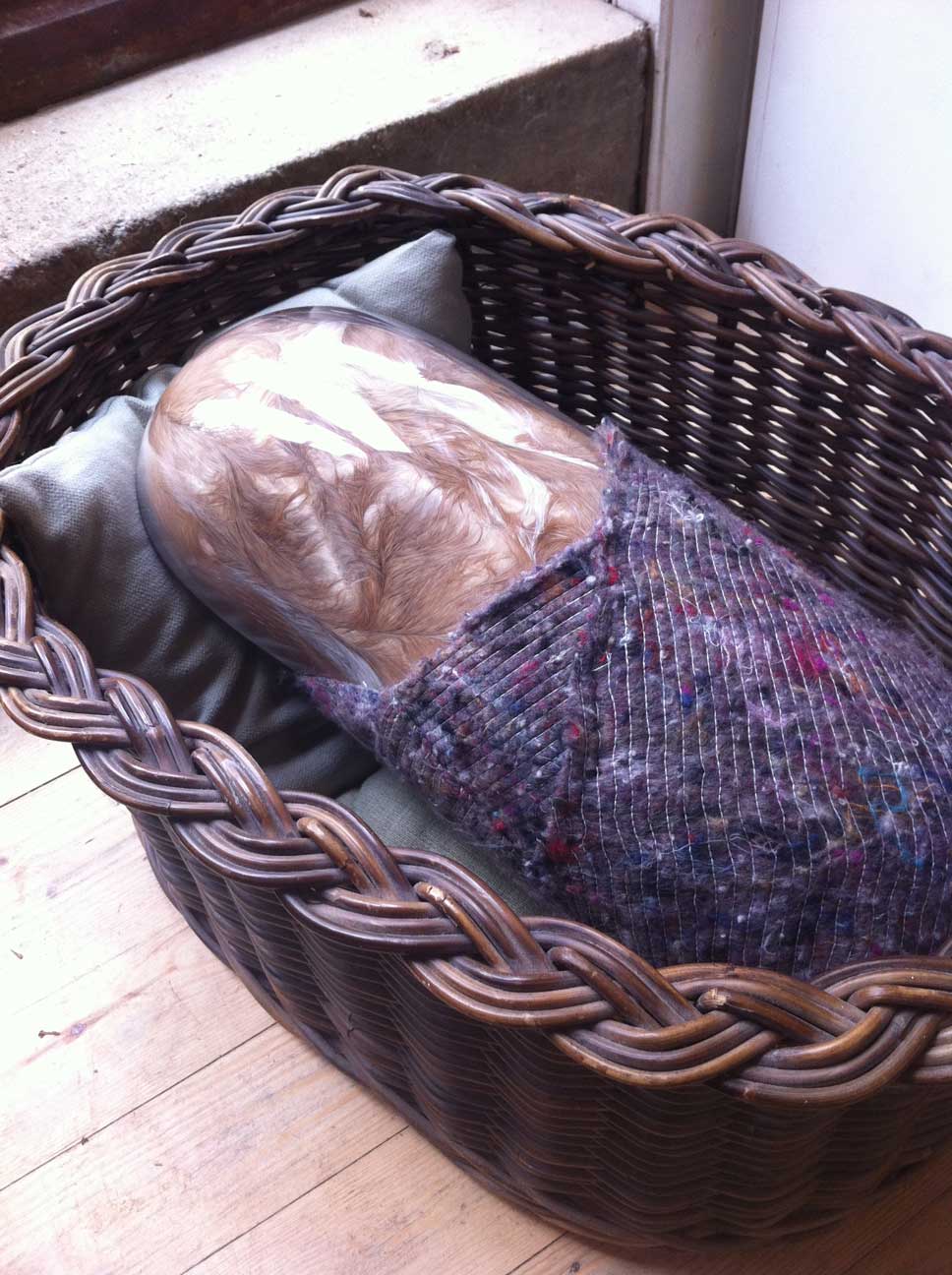Q&A: artist Adeline de Monseignat
 A glass ball filled with fur: beautiful, disturbing, both? Meet the ‘creapture’, one of the repeating motifs in the work of Adeline de Monseignat. The young London-based Dutch-Monegasque artist is currently holding her first solo show at Mayfair’s Ronchini Gallery.
A glass ball filled with fur: beautiful, disturbing, both? Meet the ‘creapture’, one of the repeating motifs in the work of Adeline de Monseignat. The young London-based Dutch-Monegasque artist is currently holding her first solo show at Mayfair’s Ronchini Gallery.
The exhibition, Home, explores childhood nostalgia in an installation incorporating architecture, sculpture and drawing. It’s de Monseignat’s most personal work, using the dimensions of her childhood bedroom - a place of early imagination and play - to create an immersive space in the middle of the gallery.
At the centre of the structure lies the ‘creaptures’. At once alive and dead, protected and restrained, cute and threatening, emotionally disruptive, they're arranged in a metre-wide 'seed pod'. No surprise then that De Monseignat cites her influences as René Magritte and Bourgeois, both artists influenced by personal psychological events.
I went to Adeline’s light, bright - and brisk - studio, in Old Paradise Yard, South East London, to meet the artist and talk about her work, her inspirations, her aims and hopes.
Bel: This is your first solo show. How did that influence your choice of work? Adeline: I know how intimidating solo shows can be. You feel as though you’re opening up an intimate space to the public. Instead of shying away from it, I wanted to emphasise that. I asked myself which space felt most intimate to me and thought of my childhood bedroom. I’d spend so much time there, drawing, cutting, collaging, painting all day. I wanted to welcome people into that environment.
Bel: Describe the space. Adeline: The outer structure are the dimensions of my childhood bedroom. It cocoons the heart of the installation which are my ‘creaptures’, arranged in a 'seed pod', at the centre of the exhibition. The pod was inspired by the lotus flower and pays homage to Louise Bourgeois’s marble sculpture Cumul (1969).
Bel: They're such a key part of your work. Adeline: They are the object of my obsession. They grow in my head. I can’t help thinking about them and making them larger. People often want to touch them but, because they have no access to them in an exhibition, they touch them with their eyes rather than their hands. And they go back to past experiences, to what touching fur is like. Because I use organic materials, they tend to have a presence. You recognise that material as being once alive. They’re all recycled vintage fur coats.
Bel: There's a very contemplative space around the pod. Adeline: It’s an area where the viewer can sit and have a dialogue with the objects. Having an exhibition allows a viewer to have a dialogue with you, with your mind. In many exhibitions, the objects are just there and there’s very little shelter for the viewer to feel comfortable in, to have that moment, to sit, to think, to meditate. I wanted to recreate a cocoon. Everything in modern life is so fast-paced. Having a moment with that work is really important. The gallery told me someone sat there for 20 minutes. It brings people together or back to themselves.
Bel: Where did you first come up with the idea of closing fur in glass? Adeline: Three or four years ago, when I was working on my Masters. I was interested in the relationship between the viewer and the object. I started using fur as an interactive medium so people were encouraged to touch but increasingly, I found the tension was so much greater when touch was suggested but not performed. After it’s sold, it’s completely different. I do treasure how people have a role with the afterlife. That’s important in my work.
Bel: There’s also a sense of containment. Adeline: Often, whatever I create that is supposed to protect is also the source of threat which I find interesting. I think it’s often the case in life. It can be clothes, people we love, passions. The glass is something that protects but also contains and restricts. I guess it’s just my experience of life.
Bel: You work with other fabrics too. Adeline: I love fabrics that have a story. In the show, I’ve recycled childhood bedsheets and awnings which have aged with time. Fabric is a very honest material. Whatever happens to it is there to be seen like a map: wounds, stains, dust, tears. I love that honesty and how immediate and direct it is.
Till January 17, 2015. Opening Hours: Monday-Friday 10AM – 6PM, Saturday 11AM – 5PM. Ronchini Gallery, 22 Dering Street, London, W1S 1AN. Tel: 020 7629 9188







